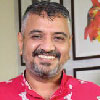 Says Kunal Jeswani, CEO, Ogilvy, India, “Reverse mentoring is a natural part of life. We’ve always, always learnt from the young. They bring a fresh perspective to our views on how things should be done and they are always early adopters of not just new platforms, but also new ways of working. All that is required is a work culture that is open, curious and respectful of varied points of view, which agencies have always been open to.”
Says Kunal Jeswani, CEO, Ogilvy, India, “Reverse mentoring is a natural part of life. We’ve always, always learnt from the young. They bring a fresh perspective to our views on how things should be done and they are always early adopters of not just new platforms, but also new ways of working. All that is required is a work culture that is open, curious and respectful of varied points of view, which agencies have always been open to.”So what exactly is this ‘fresh perspective’ that young adlanders are bringing to the table?
 A DIGITAL-FIRST APPROACH
A DIGITAL-FIRST APPROACHWith buzzwords like analytics, Big Data, artificial intelligence, augmented reality, and the like being thrown around with reckless abandon, it is the digital natives who have the most to gain with their tech-savvy, digital and social media-centred prowess. No surprise then, that most Digital agencies have young leaders at the helm, while their older peers play the catch-up game. Remarks 26-yearold Rishab Aggarwal, Senior Planning Manager, Madison Media, “Whatever I am today is because of the great mentoring that I have undergone. However, I have helped lend inputs on immersive technology related to social media, based on first-hand knowledge that I have.” Adds 27-year-old Nirali Hingwala, Associate Director, Data, Insights and Analytics, Indigo Consulting, “Most of my seniors usually come from a mainline background. And I am a digital media analyst. So, there is a lot we discuss about new tools and given the dynamism of this industry, there is always a fruitful idea exchange between my peers and me in terms of the analytics space.” Their industry peers agree that given the dynamic technology shifts, keeping up with changing tech trends and staying ahead of the digital curve requires some mentorship from digital natives.
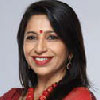 Remarks Megha Tata, Managing Director - South Asia, Discovery Communications India, “I am a big believer of hiring people who are brighter than me. In a world where there is so much change happening constantly, whether it’s consumption patterns, platforms or overall consumer experience, it’s very difficult to keep track of it all. So, the only way is to get young fresh minds into the mix who understand these changes, consume them, and can relate more to them.” As Archana Jain, Founder and Managing Director, PR Pundit Public Relations puts it, “The youth are so adept with the digital medium today, as they grew up with it unlike us, and I am learning every day from them, whether it is in respect to the work that we do with social influencers or social media.”
Remarks Megha Tata, Managing Director - South Asia, Discovery Communications India, “I am a big believer of hiring people who are brighter than me. In a world where there is so much change happening constantly, whether it’s consumption patterns, platforms or overall consumer experience, it’s very difficult to keep track of it all. So, the only way is to get young fresh minds into the mix who understand these changes, consume them, and can relate more to them.” As Archana Jain, Founder and Managing Director, PR Pundit Public Relations puts it, “The youth are so adept with the digital medium today, as they grew up with it unlike us, and I am learning every day from them, whether it is in respect to the work that we do with social influencers or social media.”QUESTIONING THE BASICS
“Within the Ogilvy context, it’s wonderful that we have always believed in the idea of co-creation, with everyone considered equals when in the same room. However, it is important to go beyond set mindsets and assumptions to actual deep, on-ground research. This is how we were able to tap into great advertising opportunities at Kumbh Mela, which for years before this had remained untapped due to lack of clear knowledge,” says 27-year-old Krishnakant Mishra, Content Lead, Ogilvy, aka the Kumbh Mela whizkid, who has received kudos from Ogilvy bosses and clients. Adds 30-year-old Namita Kulkarni, Director-The Exchange, Mindshare, “Whenever there is a briefing session with my seniors, I am the one who asks a lot of questions, and I think I have taught my peers to question the basics.”
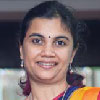 AGILITY, SPEED, PASSION, ENERGY
AGILITY, SPEED, PASSION, ENERGY Youngsters 22-30 years of age always have boundless energy, unbridled passion, supersonic speed and agility in their quest to constantly prove themselves, put their point across and do more with less, with an aim to climb the agency ladder in record time. Such is their passion that it tends to have a positive effect on their peers as well, leading to all-round enthusiasm and action. Kranti Gada, Chief Operating Officer, Shemaroo Entertainment tells us that she prefers not sitting in a cabin, but rather with the younger people in the team as she is inspired by their infectious energy and enthusiasm. “Today’s average 25-year-old probably works at twice the speed as me. I just constantly observe how they are in the real world, online, into their phones, contributing to meetings; a meeting is so dynamic with them around and I try to do that myself. I just find it can actually help collaborative learning and contribution to any topic that you are discussing in a big way, having these young people around,” she says.
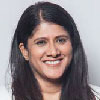 For Priya Nair, Executive Director, Home Care, Hindustan Unilever, too, the energy, passion and purpose with which young people work today is something that is a learning for her, while Gayatri Yadav, President & Head, Consumer Strategy and Innovation, Star India values the moral integrity and honesty that the youth bring to the workplace, apart from their energy and their purpose-driven outlook, believing they can make a difference. Clarity of thought and the ability to multitask is something that
For Priya Nair, Executive Director, Home Care, Hindustan Unilever, too, the energy, passion and purpose with which young people work today is something that is a learning for her, while Gayatri Yadav, President & Head, Consumer Strategy and Innovation, Star India values the moral integrity and honesty that the youth bring to the workplace, apart from their energy and their purpose-driven outlook, believing they can make a difference. Clarity of thought and the ability to multitask is something that  Prathyusha Agarwal, Chief Marketing Officer, Zee Entertainment Enterprises Ltd learns from the millenials around her. A case in point is 26-year-old Neha Singh, Account Director, Wunderman Thompson, Mumbai, who says, “I am focused on getting things done, even if it means serious multi-tasking. I am always on the go, calling, emailing, getting artworks done while also writing strategies and attending meetings. I have everyone’s number on speed dial – from the agency’s studio manager to the watchman’s number, to the canteen guy’s number to the CEO himself. So I don’t wait to get to office, or for a suitable time to work on something. I write to people, I call people, I get things done.”
Prathyusha Agarwal, Chief Marketing Officer, Zee Entertainment Enterprises Ltd learns from the millenials around her. A case in point is 26-year-old Neha Singh, Account Director, Wunderman Thompson, Mumbai, who says, “I am focused on getting things done, even if it means serious multi-tasking. I am always on the go, calling, emailing, getting artworks done while also writing strategies and attending meetings. I have everyone’s number on speed dial – from the agency’s studio manager to the watchman’s number, to the canteen guy’s number to the CEO himself. So I don’t wait to get to office, or for a suitable time to work on something. I write to people, I call people, I get things done.”LEARNING FROM CLIENTS
 “To listen, and may be not get defensive in front of clients is something that young people do better, because they have much less to lose and a lot to learn from all corners, including clients or other agency partners. I believe it’s important for senior agency leaders to take a step back and listen to clients especially during pitches, because maybe they could stand to learn something in the bargain,” Priyadarsini GP, 29-year-old Brand Strategy Partner with L&K Saatchi & Saatchi, tells us. The process of learning to unlearn and work smart is also another learning. Talking about her 19-year-old mentor who helps her stay ahead of the curve,
“To listen, and may be not get defensive in front of clients is something that young people do better, because they have much less to lose and a lot to learn from all corners, including clients or other agency partners. I believe it’s important for senior agency leaders to take a step back and listen to clients especially during pitches, because maybe they could stand to learn something in the bargain,” Priyadarsini GP, 29-year-old Brand Strategy Partner with L&K Saatchi & Saatchi, tells us. The process of learning to unlearn and work smart is also another learning. Talking about her 19-year-old mentor who helps her stay ahead of the curve,  Pooja Jauhari, Chief Executive Officer, The Glitch says, “I am part of an agency which is extremely agile and very modern. And we are looked at as a team that is ahead of the curve. However, for us to stay ahead of the curve, we have to constantly learn from younger people who are coming into the industry every day. And for me, that I learn daily from my 19-year-old mentor.”
Pooja Jauhari, Chief Executive Officer, The Glitch says, “I am part of an agency which is extremely agile and very modern. And we are looked at as a team that is ahead of the curve. However, for us to stay ahead of the curve, we have to constantly learn from younger people who are coming into the industry every day. And for me, that I learn daily from my 19-year-old mentor.”SPONTANEITY, RISK-TAKING, IDEALISM
 “What I learn from my juniors every day is not to take life that seriously. They love to do things just at the drop of their hats. They are much more spontaneous than I was at the start of my career. They are not afraid to take risks or to say no to things that they don’t enjoy. And they are bolder and much more fearless in the choices that they make,” comments Shereen Bhan, Managing Editor, CNBC-TV18. Millenials today are spontaneous, impulsive, think on their feet, do not carry baggage, go with the flow rather than overprepare and have an incessant need to question everything; qualities which their peers often admire. Idealism is yet another important ingredient to changing the way we see the world, and this is what
“What I learn from my juniors every day is not to take life that seriously. They love to do things just at the drop of their hats. They are much more spontaneous than I was at the start of my career. They are not afraid to take risks or to say no to things that they don’t enjoy. And they are bolder and much more fearless in the choices that they make,” comments Shereen Bhan, Managing Editor, CNBC-TV18. Millenials today are spontaneous, impulsive, think on their feet, do not carry baggage, go with the flow rather than overprepare and have an incessant need to question everything; qualities which their peers often admire. Idealism is yet another important ingredient to changing the way we see the world, and this is what  Faye D’Souza, Executive Editor, Mirror Now believes is the biggest asset of her young team, that she says is far better at picking up the pulse of what people care about and have a much better understanding of what young India wants and feels.
Faye D’Souza, Executive Editor, Mirror Now believes is the biggest asset of her young team, that she says is far better at picking up the pulse of what people care about and have a much better understanding of what young India wants and feels.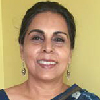 TAKING A STAND
TAKING A STAND Today’s generation is very clear about what they want and don’t want and are not afraid to say no or stand up for their rights, giving them leverage to succeed in the industry, without compromising on what they believe in. Giving the example of the me-too movement, Alpana Parida, Managing Director, DY Works says, “I have learnt from young women in my organization not to put up with situations they are not comfortable with, unlike my generation who learnt to overlook many things. I am so glad that there is another generation which has found a completely different world, are vastly different in terms of the decisions they take and I learn a lot from their world view as women, as well as emerging consumers.”
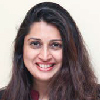 WORK-LIFE BALANCE
WORK-LIFE BALANCE Apart from the ability to have fun at work and live the adage, ‘work hard, party harder’, young people put greater emphasis on pursuing hobbies and passions away from work, giving equal importance to work and play. “I have noticed that my team members have multiple careers going at the same time. So, at any given point they have two or three jobs; they are weekend bloggers, and they are gamers, and they are also working here. That is really impressive and something the older generation can learn from them,” shares Virginia Sharma, Director, Marketing Solutions, LinkedIn India.
A PROCESS-DRIVEN APPROACH TO REVERSE MENTORING
In the modern workplace, lines between different agegroups have blurred, making two-way exchange of ideas a necessity. This kind of knowledge-sharing helps both the parties feel valued for their contributions and goes a long way in fostering stronger relationships. Recognizing the significant role that reverse mentoring plays in an organization, several agency HR heads strongly advocate it and have several initiatives to encourage the process.
“We at Publicis Group are constantly on the lookout for transformational talent and have brought on board varied talent like product designers, social media influencers, UI/ UX designers. This kind of young talent challenges status quo and enables the organization to be more disruptive,” remarks Ameya Joshi - Leader HR, L&K Saatchi & Saatchi.
Digital agency Gozoop also has internship programmes which facilitate reverse mentoring wherein college students share insights and current trends with their seniors. “This has gone a long way in helping us coin winning campaigns for our clients,” Bansi Raja, HR Director, Gozoop tells us.
Jai Arya, General Manager HR, Havas Group India says that while the group strongly believes in the power of mentoring, they prefer an informal process and more organic process over creating a policy. The Havas Village integrated and collaborative approach which brings together all communication disciplines – creative, media, digital, activation, events, and public relations, is a great platform for reverse mentoring.
DDB Mudra Group piloted a reverse mentoring project in one agency in 2017 and will be implementing it across the Group this year. Explains Rita Verma, Executive Vice President & Head HR, DDB Mudra Group, “We also have a committee in place comprising 8-10 young executives aged between 26-32 years who meet on a monthly basis to discuss ideas, and several of these have been implemented in the organization as well.”
Yet another agency which has a committee in place to encourage reverse mentoring as a formal process is GroupM. According to Rohit Suri, Chief HR & Talent Officer, GroupM South Asia, “The Youth Executive Committee (YCO) is a team of a young, bright and dynamic under-30 high achievers who work on projects of organizational importance along with the Executive Committee (ExCo), helping the YCO to sharpen and develop new skills. The YCO thus acts as a Shadow Board to the ExCo. In addition, the YCO also reverse mentors the ExCo on new age skills e.g. data science, digital, analytics, social, etc. The reverse mentoring is based on need assessment done of the ExCo, matching the key skills of the YCO. This benefits both; the ExCo gets fresh, rich and valuable insights, while the young executives get constant face time with the senior leadership and learn from their experiences.”
Shweta Gopalakrishnan, People & Culture Head, Leo Burnett India talks about the reverse mentoring at Leo Burnett being a continuous process, right from campus hires to initiatives like a ‘master class’, which is an open forum for anyone across the agency to conduct a workshop on topics that they are experts in or have a deep understanding of. “The senior management also attends these fora, thus ensuring that there is continuous exchange of information across the agency,” she says.
At FCB India, The Young Leaders Council, a body of junior to mid-level talent below the age of 30 is a shadow body to the Executive Board of the Company, helping the leadership to view things from a millennial lens. They ideate, discuss and debate on a wide spectrum of subjects and interface with the Executive Board of the Company on a regular basis, Savita Mathai, Group Chief Talent Officer, FCB India & IPG Mediabrands India tells us. She adds, “At IPG Mediabrands, young talent comes into the company in large numbers through an entry level programme called LEAD. Every year, Shashi Sinha, CEO, IPG Mediabrands India not only personally welcomes the new batch of trainees but also makes it a point to monitor their progress. He has a year-end lunch session with them where he seeks their ideas for change and candid feedback about the company.”
At Viacom18, Group CEO & MD, Sudhanshu Vats engages in conversations over lunch with younger team members and discusses business as well as personal anecdotes, over an initiative called ‘Vats Up Lunch’. “Another programme we have is ‘Content pe charcha’, where senior leaders discuss content and storylines with younger team members,” Sonia Huria, Head-Corporate Marketing, Communications & Sustainability, Viacom18 tells us.
Thus, reverse mentoring that encourages knowledge exchange, a collaborative environment and breaks barriers leading to an open workplace, is a proven way to create engagement within the workforce and it is something that is only set to gain more ground in the years to come.
























